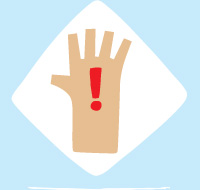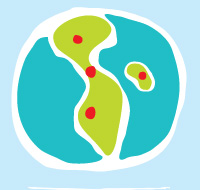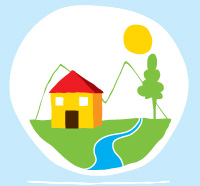
World Vision International Regional Office
Regional Office for Latin America and the Caribbean
Stephen J. Latham
LAC REGIONAL RESILIENCE AND DISASTER RISK REDUCTION ADVISOR
Ciudad del Saber, Edificio 223, Piso 2, Locales B y C
Clayton, Panama City
Email: This email address is being protected from spambots. You need JavaScript enabled to view it.
Skype: steve0603
This project would not be possible without generous support from World Vision Australia.
How is community resilience applied by CRP LACRO?
- The CRP LACRO utilizes the Resilient Practices Methodology to provide a grounded conceptual understanding and practical application of community resilience in participating Area Development Programme (ADP) communities.
- Resilience can only be achieved when risks are reduced, and the protection of lives and livelihoods strengthened among community members and their children.
- As such, the project works with communities to assess their risk-reduction status across multiple livelihood assets and disaster or violence risk reduction priorities, along with cross-cutting issues.
- The livelihood assets considered are: human-cultural, socio-political, environmental-health, economic-financial, physical-structural, technological-scientific and psychological-spiritual.
- The disaster/violence risk reduction priorities addressed are:
- Priority 1: Understanding disaster/violence risk
- Priority 2: Strengthening governance and institutions / institutional arrangements / organizational, legal and policy frameworks to manage disaster/violence risk
- Priority 3: Investing in disaster/violence risk reduction for resilience
- Priority 4: Enhancing disaster/violence preparedness for effective response, and to Build Back Better in recovery, rehabilitation and reconstruction
- The cross-cutting issues addressed are: child protection, gender, persons with disabilities, volunteers and Christian commitments.
Critical Point Analysis.
- Utilizing the problem tree analysis, participating communities consider 15 livelihood assets and 4 disaster/violence risk reduction priorities (along with crosscutting issues), to identify the primary root cause(s) of vulnerability and hazards in the community that lead to a negative critical point(s). Conversely, the community identifies the source(s) of positive critical point(s) that will allow them to accelerate their ability to most effectively transform their community from a state of vulnerability to a state of resilience.
- The Critical Point Analysis uses a multi-tiered approach to address risk reduction, asset building, and protection factors. The negative and positive critical points need to be determined for the livelihood asset spokes and disaster/violence risk reduction priority spokes of the resilience wheel. By adopting this tool, communities can minimize their vulnerabilities and exposure to hazards while maximizing resilience—thus helping to ensure a more enabling environment for sustainable development to be achieved.
WHEN is the community resilience applied?
Resilient Practices are applicable in countries ranging from Context I (high physical needs/low social stability) to Context V environment (relatively low physical needs/high social stability).
WHO does community resilience target in the Latin America and Caribbean (LAC) region?
- Children, Adolescents, Youth (CAY) and at-risk populations who face exposure to multiple hazards and vulnerabilities.
WHEN is the community resilience applied?
- BEFORE – to avoid the shock., stress or disaster altogether (avoidance or ‘resistance’)
- DURING – to withstand the effect of a shock, stress or disaster (absorption or ‘adaptive response’)
- AFTER – to recover quickly from a shock., stressor or disaster (counteraction or ‘bounce back’ ability)

Resilience in Situations of Chronic Violence
For adolescents, youth and adults, community or NGO leaders
Request module
Crosscutting Themes Module
Gender, Child Protection, Disabilities, HIV/AIDS/Health and Environment
Request module
Formal Education & DRR
Guidelines to address DRR issues in the context of formal education
Request module




















